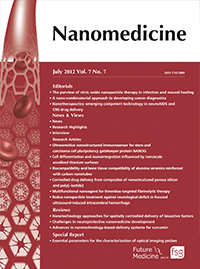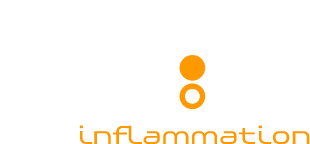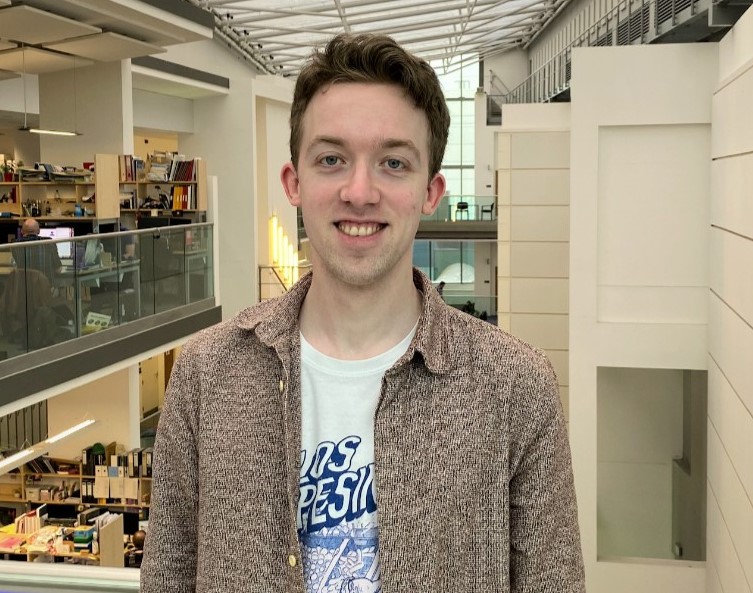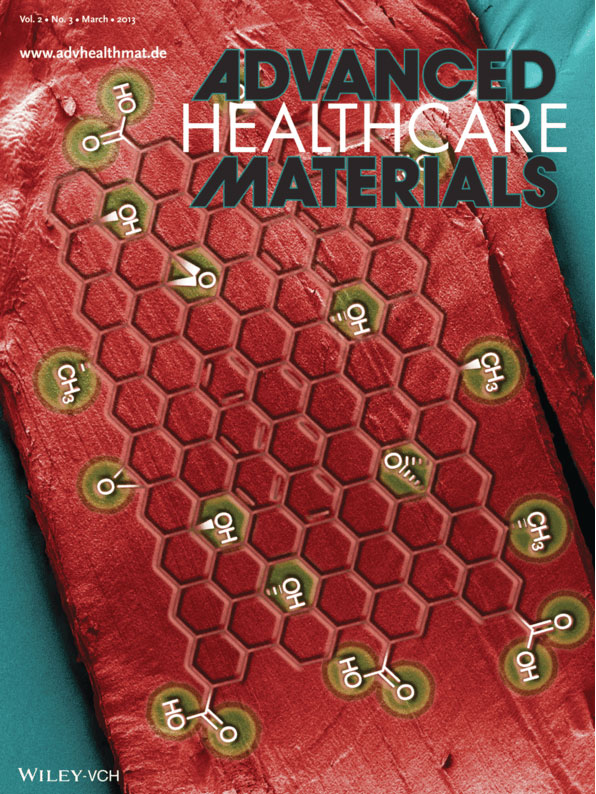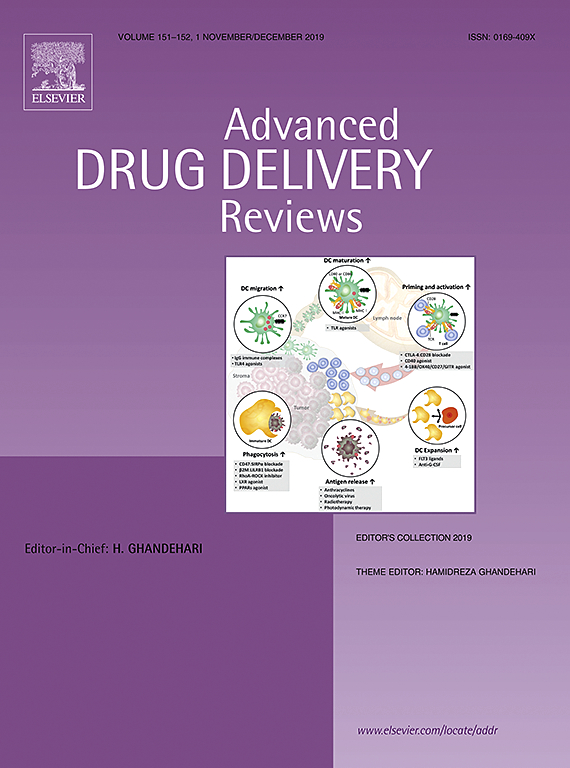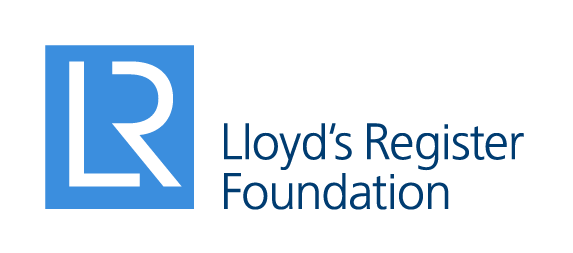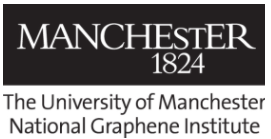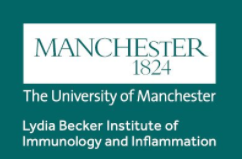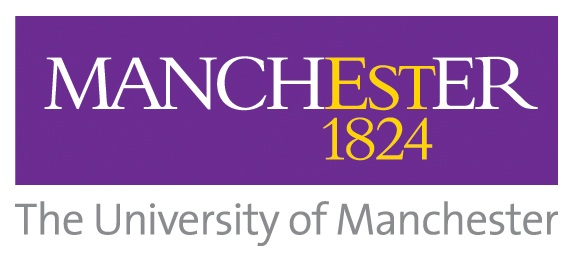The NanoInflammation Team focuses on studying the interactions of nanomaterials with the immune system and associated diseases, using in vitro and in vivo models. We investigate the consequences of nanomaterial interactions with different biological systems (pulmonary, central nervous, cardiovascular, lymphatic, and mononuclear phagocytic systems) at various scales (time, dose, duration) in order to reveal their safety limitations in the context or not of biomedical application.
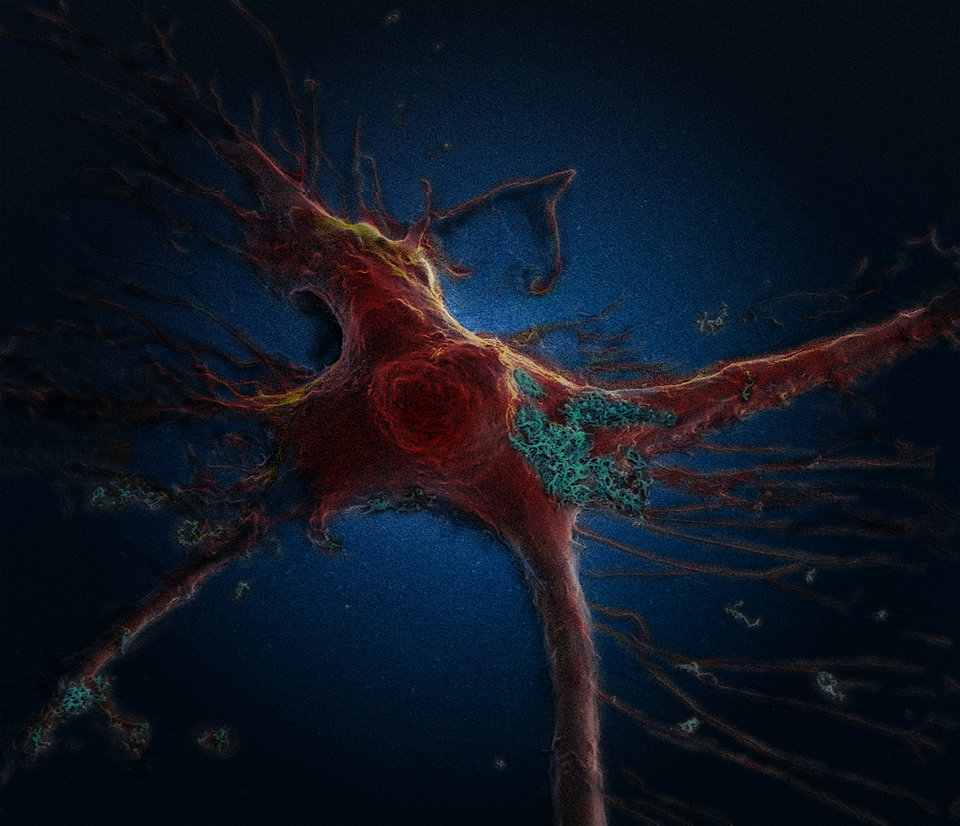
NanoInflammation Research
Our objectives are not only to identify the physicochemical properties causing adverse outcomes, but also to find the biological mechanisms triggered by the nanomaterial-biological system interaction. By correlation of specific biological responses to the nanomaterial physicochemical properties, and revealing what is safe and what causes harm, the knowledge we are creating helps the production of nanomaterials that are safer-by-design for the patient or the end-user in the intended application.
To address these questions, we use state-of-the-art techniques as well as contribute to the development of new technical modalities to study the nanomaterial-biology interface. We work at all scale levels (from molecules up to full organism), using either specific biomarkers in an adverse outcome pathway approach, or high-content methods to decipher the complexity of the nano/bio interface. We engage with stakeholders such as nanomaterial production industries (chemical or pharmaceutical companies), regulators or standards institutions, in order to make our experimental work as realistic and exposure-driven as possible.
Health impact of engineered nanomaterials
We investigate the impact of (nano)materials on human health in an occupational, end-users or biomedical context. Using different routes of exposure, we study the impact on primary and secondary organs, focusing primarily on the innate and adaptive immune responses. Current investigations are assessing the impact of carbon based materials, 2D materials and micro- /nano- plastics after single or repeated exposure in various in vitro and in vivo models.

Correlative microscopy for toxicological investigations
Using the innate chemical signature of nanomaterials, we perform correlative microscopy to understand the impact of nanomaterials in respect to their spatial location in tissue and cells. In the past we used X ray fluorescence microscopy and light microscopy; in more recent works, we correlated Raman imaging with immunofluorescence imaging.
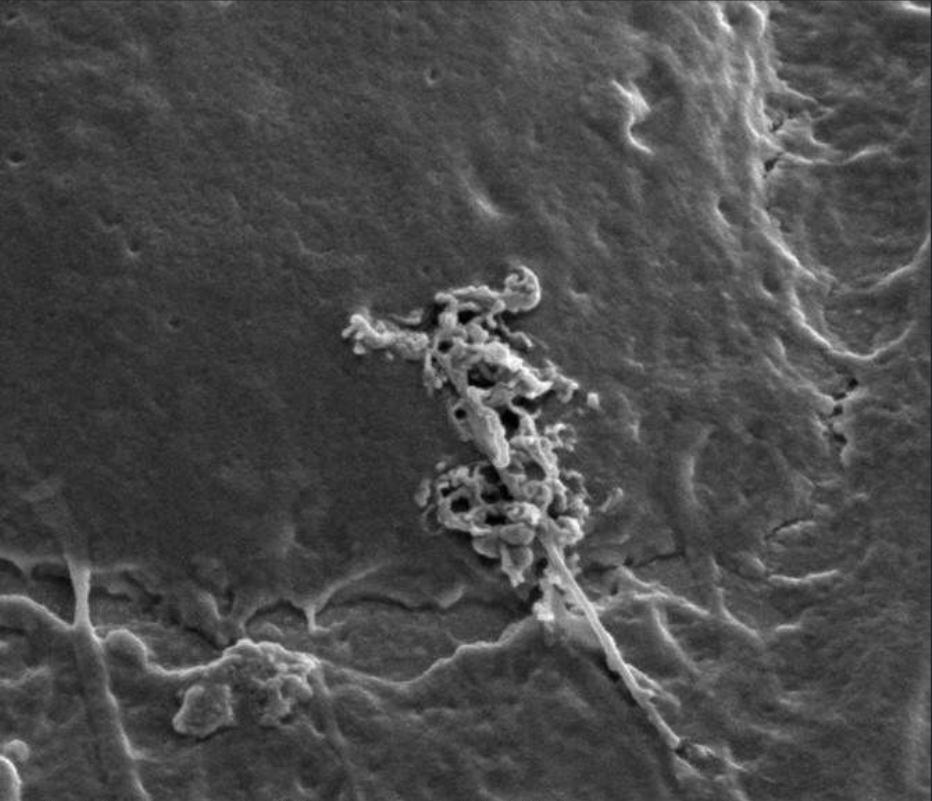
TEAM MEMBERS
NanoInflammation PUBLICATIONS
FILTER
Nature Nanotechnology, 2024, in press [https://doi.org/10.1038/s41565-023-01572-3]
First-in-human controlled inhalation of thin graphene oxide nanosheets to study acute cardiorespiratory responses
Jack Andrews^, Shruti Joshi^, Evangelos Tzolos, Maaz Syed, Hayley Cuthbert, Livia Crica, Neus Lozano, Emmanuel Okwelogu, Jennifer Raftis, Lorraine Bruce, Craig Poland, Rodger Duffin, Paul Fokkens, John Boere, Daan Leseman, Ian Megson, Phil D. Whitfield, Kerstin Ziegler, Seshu Tammireddy, Marilena Hadjidemetriou, Cyrill Bussy, Flemming Cassee, David Newby, Kostas Kostarelos*, Mark Miller*
FULL ABSTRACT
ACS Nano, 2024, published online
Environmental and health impacts of graphene and other two-dimensional materials: a Graphene Flagship perspective
Hazel Lin, Tina Buerki-Thurnherr, Jasreen Kaur, Peter Wick, Marco Pelin, Aurelia Tubaro, Fabio Candotto Carniel, Mauro Tretiach, Emanuel Flahaut, Daniel Iglesias, Ester Vázquez, Giada Cellot, Laura Ballerini, Valentina Castagnola, Fabio Benfenati, Andrea Armirotti, Antoine Sallustrau, Mathilde Keck, Frédéric Taran, Cyrill Bussy, Sandra Vranic, Kostas Kostarelos, Mona Connolly, José Maria Navas, Florence Mouchet, Laury Gauthier, James Baker, Blanca Suarez-Merino, Tomi Kanerva, Maurizio Prato, Bengt Fadeel*, Alberto Bianco*
FULL ABSTRACT
ACS Nano, 2023, 17 (24): 24919–24935
Pulmonary toxicity of boron nitride nanomaterials is aspect ratio dependent
Luis Visani^, Thomas Loret^, Yilin He, Morgan Legnani, Hazel Lin, Anne Marie Galibert, Alexander Fordham, Sonja Holme, Antonio Castillo, Francesco Bonaccorso, Alberto Bianco*, Emmanuel Flahaut*, Kostas Kostarelos*, Cyrill Bussy*
FULL ABSTRACT
Small, 2023,19, 2301201
Lung persistence, biodegradation and elimination of graphene based materials is predominantly size-dependent and mediated by alveolar phagocytes
Thomas Loret^, Luis Visani de Luna^, Matteo Lucherelli, Alexander Fordham, Neus Lozano, Alberto Bianco*, Kostas Kostarelos*, Cyrill Bussy*
FULL ABSTRACT
Nanoscale, 2023,15 (11): 5510-5518
Correlative radioimaging and mass spectrometry imaging a powerful combination to study 14C-graphene oxide in vivo biodistribution
Hélène Cazier, Carole Malgorn, Dominique Georgin, Nathalie Fresneau, Fabrice Beau, Kostas Kostarelos, Cyrill Bussy, Stéphane Campidelli, Mathieu Pinault, Martine Mayne-L'Hermite, Frédéric Taran, Christophe Junot, François Fenaille, Antoine Sallustrau, Benoit Colsch
FULL ABSTRACT
Nanoscale, 2022, 14 (46): 17297-17314
Graphene oxide modulates dendritic cell ability to promote T cell activation and cytokine production
Helen Parker, Alfredo Gravagnuolo, Sandra Vranic, Livia Crica, Leon Newman, Oliver Carnell, Cyrill Bussy, Rebecca Dookie, Eric Prestat, Sarah Haigh, Neus Lozano, Kostas Kostarelos*, Andrew MacDonald*
FULL ABSTRACT
Particle and Fibre Toxicology, 2022, 19 (1), 1-21
Lung recovery from DNA damage induced by graphene oxide is dependent on size, dose and inflammation profile
Luis Augusto Visani de Luna, Thomas Loret, Alexander Fordham, Atta Arshad, Matthew Drummond, Abbie Dodd, Neus Lozano, Kostas Kostarelos and Cyrill Bussy
FULL ABSTRACT
Journal of Hazardous Materials, 2022, 435, 129053
Hazard assessment of abraded thermoplastic composites reinforced with reduced graphene oxide
Savvina Chortarea, Ogul Can Kuru, Woranan Netkueakul, Marco Pelin, Sandeep Keshavan, Zhengmei Song, Baojin Ma, Julio Gómes, Elvira Villaro Abalos, Luis Luna, Thomas Loret, Alexander Fordham, Matthew Drummond, Nikolaos Kontis, George Anagnostopoulos, George Paterakis, Pietro Cataldi, Aurelia Tubaro, Costas Galiotis, Ian Kinloch, Bengt Fadeel, Cyrill Bussy, Kostas Kostarelos, Tina Buerki-Thurnherr, Maurizio Prato, Alberto Bianco, Peter Wick*
FULL ABSTRACT
Advanced Science, 2022, 9, 2104559
Innate but not adaptive immunity regulates lung recovery from chronic exposure to graphene oxide nanosheets
Thomas Loret, Luis Luna, Alexander Fordham, Atta Arshad, Katharine Barr, Neus Lozano, Kostas Kostarelos and Cyrill Bussy
FULL ABSTRACT
Nanoscale Advances, 2021, 3 (14), 4166-4185
Dynamic interactions and intracellular fate of label-free, thin graphene oxide sheets within mammalian cells: Role of lateral sheet size
Yingxian Chen, Jack Rivers-Auty, Livia Crică, Katie Barr, Vinicio Rosano, Adrian Arranz, Thomas Loret, Cyrill Bussy, David Spiller, Kostas Kostarelos*, Sandra Vranic*
FULL ABSTRACT
Langmuir, 2021, 37 (2), 867-873
Adsorption of P103 nanoaggregates on graphene oxide nanosheets: Role of electrostatic forces in improving nanosheet dispersion
Rahul Patil, Debes Ray, Vinod K. Aswal, Cyrill Bussy, Pratap Bahadur, Sanjay Tiwari*
FULL ABSTRACT
Advanced Therapeutics, 2021, 4 (1), 2000109
Deep tissue translocation of graphene oxide sheets in human glioblastoma 3D spheroids and an orthotopic xenograft model
Irene de Lázaro, Paul Sharp, Cansu Gurcan, Ahmet Ceylan, Maria Stylianou, Thomas Kisby, Yingxian Chen, Sandra Vranic, Katharine Barr, Hadiseh Taheri, Asuman Ozen, Cyrill Bussy, Acelya Yilmazer*, Kostas Kostarelos*
FULL ABSTRACT
Small, 2020, 16 (48), 2004029
Intracerebral injection of graphene oxide nanosheets mitigates microglial activation without inducing acute neurotoxicity: A pilot comparison to other nanomaterials
Corinne Portioli, Cyrill Bussy*, Mariarosa Mazza, Neus Lozano, Dhifaf A. Jasim, Maurizio Prato, Alberto Bianco, Marina Bentivoglio, Kostas Kostarelos*
FULL ABSTRACT
Cell Reports Physical Science, 2020, 1 (9), 100176
Nose-to-Brain translocation and cerebral biodegradation of thin graphene oxide nanosheets
Leon Newman, Artur Filipe Rodrigues, Dhifaf Jasim, Isabella Anna Vacchi, Alberto Bianco, Cyrill Bussy*, Kostas Kostarelos*
FULL ABSTRACT
ACS Nano, 2020, 14 (8), 10168-10186
Splenic capture and in vivo intracellular biodegradation of biological-grade graphene oxide sheets
Leon Newman^, Dhifaf A. Jasim^, Eric Prestat, Neus Lozano, Irene de Lazaro, Yein Nam, Bakri M. Assas, Joanne Pennock, Sarah J. Haigh, Cyrill Bussy*, Kostas Kostarelos*
FULL ABSTRACT
Advanced Science, 2020, 7, 1903200
Size-dependent pulmonary impact of thin graphene oxide sheets in mice: Towards safe-by-design
Artur Filipe Rodrigues, Leon Newman, Dhifaf Jasim, Sourav P. Mukherjee, Jun Wang, Isabella Vacchi, Cécilia Ménard-Moyon, Alberto Bianco, Bengt Fadeel*, Kostas Kostarelos*, Cyrill Bussy*
FULL ABSTRACT
Nanoscale Horizons, 2020, 5, 1250-1263
Graphene oxide nanosheets modulate spinal glutamatergic transmission and modify locomotor behaviour in an in vivo zebrafish model
Giada Cellot*, Sandra Vranic, Yu Young Shin, Robyn Worsley, Artur Filipe Rodrigues, Cyrill Bussy, Cinzia Casiraghi, Kostas Kostarelos, Jonathan McDearmid
FULL ABSTRACT
Nanotechnology Characterization Tools for Environment, Health and Safety, Kumar, C.S.S.R. (ed.), Springer, 2019, 1-46
Assessing the adverse effects of two-dimensional materials using cell culture-based models
Lidiane Silva Franqui, Luis Augusto Visani de Luna, Thomas Loret, Diego Stefani Teodoro Martinez, Cyrill Bussy*
FULL ABSTRACT
Advanced Materials Interfaces, 2019, 6, 1900229
Biocompatibility considerations in the design of graphene biomedical materials
Christopher J Bullock, Cyrill Bussy
FULL ABSTRACT
FlatChem 2018, 12, 17-25
Graphene-based papers as substrates for cell growth: Characterisation and impact on mammalian cells
Dhifaf Jasim, Neus Lozano, Cyrill Bussy, Irina Barbolina, Artur Filipe Rodrigues, Kostya Novoselov, Kostas Kostarelos*
FULL ABSTRACT
Archives of Toxicology, 2018, 92 (11), 3359-3379
Immunological impact of graphene oxide sheets in the abdominal cavity is governed by surface reactivity
Artur Filipe Rodrigues, Leon Newman, Dhifaf A. Jasim, Isabella A. Vacchi, Cécilia Ménard-Moyon, Livia E. Crica, Alberto Bianco, Kostas Kostarelos*, Cyrill Bussy*
FULL ABSTRACT
ACS Nano, 2018, 12 (11), 10582-10620
Safety assessment of graphene-based materials: Focus on human health and the environment
Bengt Fadeel,* Cyrill Bussy, Sonia Merino, Ester Vázquez, Emmanuel Flahaut, Florence Mouchet, Lauris Evariste, Laury Gauthier, Joonas Koivisto, Ulla Vogel, Cristina Martín, Lucia G. Delogu, Tina Buerki-Thurnherr, Peter Wick, Didier Beloin-Saint-Pierre, Roland Hischier, Marco Pelin, Fabio Candotto Carniel, Mauro Tretiach, Fabrizia Cesca, Fabio Benfenati, Denis Scaini, Laura Ballerini, Kostas Kostarelos, Maurizio Prato,* Alberto Bianco*
FULL ABSTRACT
2D Materials, 2018, 5, 035020
A blueprint for the synthesis and characterisation of thin graphene oxide with controlled lateral dimensions for biomedicine
Artur Rodrigues, Leon Newman, Neus Lozano, Sourav Mukherjee, Bengt Fadeel, Cyrill Bussy*, Kostas Kostarelos*
FULL ABSTRACT
ACS Nano, 2018, 12 (2), 1373-1389
Live imaging of label-free graphene oxide reveals critical factors causing oxidative stress-mediated cellular responses
Sandra Vranic, Artur Rodrigues, Maurizio Buggio, Leon Newman, Michael White, David Spiller, Cyrill Bussy*, Kostas Kostarelos*
FULL ABSTRACT
npj 2D Materials and Applications, 2017, 39
Hypochlorite degrades 2D graphene oxide sheets faster than 1D oxidised carbon nanotubes and nanohorns
Leon Newman, Neus Lozano, Minfang Zhang, Sumio Iijima, Masako Yudasaka, Cyrill Bussy* and Kostas Kostarelos*
FULL ABSTRACT
Nanoscale Horizons, 2017, 2 (5), 284-296
Primary microglia maintain capacity to function despite internalisation and intracellular loading with carbon nanotubes
Cyrill Bussy*, Alberto Bianco, Maurizio Prato, Kostas Kostarelos*
FULL ABSTRACT
Nanoscale, 2017, 9 (14), 4642-4645
Direct visualization of carbon nanotube degradation in primary cells by photothermal imaging
Julie Russier, Laura Oudjedi, Martin Piponnier, Cyrill Bussy, Maurizio Prato, Kostas Kostarelos, Brahim Lounis, Alberto Bianco*, Laurent Cognet*
FULL ABSTRACT
Chem, 2017, 2 (3), 322-325
Culture media critically influence graphene oxide effects on plasma membranes
Cyrill Bussy* and Kostas Kostarelos*
FULL ABSTRACT
Materials Today, 2017, 20 (1), 1-2
‘Science in the City’: Bringing nanoscale medicine alive
Marilena Hadjidemetriou* and Cyrill Bussy*
FULL ABSTRACT
Nanoscale, 2016, 8 (1), 590-601
Intracellular degradation of chemically functionalized carbon nanotubes using a long-term primary microglial culture model
Cyrill Bussy, Caroline Hadad, Maurizio Prato, Alberto Bianco, Kostas Kostarelos*
FULL ABSTRACT
Carbon, 2015, 97, 126-133
Gadolinium-functionalised multi-walled carbon nanotubes as a T1 contrast agent for MRI cell labelling and tracking
Ania Servant, Igor Jacobs, Cyrill Bussy, Chiara Fabbro, Tatiana da Ros, Elzbieta Pach, Belen Ballesteros, Maurizio Prato, Klaas Nicolay and Kostas Kostarelos*
FULL ABSTRACT
ACS Nano, 2015, 9 (8), 7815-7830
Microglia determine brain region-specific neurotoxic responses to chemically functionalized carbon nanotubes
Cyrill Bussy, Khuloud T. Al-Jamal, Jorge Boczkowski, Sophie Lanone, Maurizio Prato, Alberto Bianco and Kostas Kostarelos*
FULL ABSTRACT
Nanoscale, 2015, 7, 6432-6435
The current graphene safety landscape – a literature mining exercise
Cyrill Bussy, Dhifaf A. Jasim, Neus Lozano, Daniel Terry, Kostas Kostarelos*
FULL ABSTRACT
ACS Nano, 2015, 9 (2), 1137-1149
Peptide nanofiber complexes with siRNA for deep brain gene silencing by stereotactic neurosurgery
Mariarosa Mazza, Marilena Hadjidemetriou, Irene de Lazaro, Cyrill Bussy, Kostas Kostarelos*
FULL ABSTRACT
Nanoscale, 2015, 7 (7), 2834-2840
Biodegradation of carbon nanohorns in macrophage cells
Minfang Zhang*, Mei Yang, Cyrill Bussy, Sumio Iijima, Kostas Kostarelos, Masako Yudasaka*
FULL ABSTRACT
Handbook of Safety Assessment of Nanomaterials: From Toxicological Testing to Personalized Medicine, Fadeel, B. (ed.), Pan Stanford Publishing, 2014, 319-340
Biodegradation of Carbon-Based Nanomaterials
Cyrill Bussy, Alberto Bianco, Maurizio Prato, Kostas Kostarelos*
FULL ABSTRACT
Archives of Toxicology, 2014, 89 (9), 1543-1556
The role of p53 in lung macrophages following exposure to a panel of manufactured nanomaterials
Esther Belade, Sandra Chrusciel, Lucie Armand, Angélique Simon-Deckers, Cyrill Bussy, Philippe Caramelle, Jean-Marie Gagliolo, Laurent Boyer, Sophie Lanone, Jean-Claude Pairon, Ali Kermanizadeh, Jorge Boczkowski
FULL ABSTRACT
Biomaterials, 2014, 35 (29), 8312-8320
Generation of induced pluripotent stem cells from virus-free in vivo reprogramming of BALB/c mouse liver cells
Irene de Lázaro, Cyrill Bussy, Açelya Yilmazer, Maj Simonsen, Neil Humphreys, Kostas Kostarelos
FULL ABSTRACT
Journal of Visualised Experiments (JoVE), 2013, 82, e50837
In vivo reprogramming of adult somatic cells to pluripotency by overexpression of Yamanaka factors
Açelya Yilmazer, Irene de Lázaro, Cyrill Bussy and Kostas Kostarelos
FULL ABSTRACT
Advanced Drug Delivery Reviews, 2013, 65 (15), 2061-2062
Carbon nanotubes in medicine & biology — Safety and toxicology (Preface)
Cyrill Bussy and Kostas Kostarelos
FULL ABSTRACT
Advanced Drug Delivery Reviews, 2013, 65 (15), 2127-2134
Hemotoxicity of carbon nanotubes
Cyrill Bussy, Laura Methven and Kostas Kostarelos
FULL ABSTRACT
Accounts of Chemical Research, 2013, 25 (16), 2258-2268
Safety considerations for graphene: Lessons learnt from carbon nanotubes
Cyrill Bussy, Hanene Ali-Boucetta, and Kostas Kostarelos
FULL ABSTRACT
Faraday Discussions, 2013, 166, 181-194
Peptide nanofibres as molecular transporters: From self-assembly to in vivo degradation
Mariarosa Mazza, Avnish Patel, Ramon Pons, Cyrill Bussy and Kostas Kostarelos
FULL ABSTRACT
Journal of Materials Chemistry B, 2013, 1, 4593-4600
Design, engineering and structural integrity of electro-responsive carbon nanotube-poly(methyl) methacrylate hydrogels for pulsatile drug release
Ania Servant, Cyrill Bussy, Khuloud Al-Jamal and Kostas Kostarelos
FULL ABSTRACT
Particle and Fibre Toxicology, 2013, 10, 24
Intracellular fate of carbon nanotubes inside murine macrophages: pH-dependent detachment of iron catalyst nanoparticles
Cyrill Bussy, Erwan Paineau, Julien Cambedouzou, Nathalie Brun, Claudie Mory, Barbara Fayard, Murielle Salomé, Mathieu Pinault, Mickaël Huard, Esther Belade, Lucie Armand, Jorge Boczkowski, Pascale Launois and Sophie Lanone
FULL ABSTRACT
PLoS One, 2013, 8 (1), e54754
In vivo cell reprogramming towards pluripotency by virus-free overexpression of defined factors
Açelya Yilmazer, Irene de Lázaro, Cyrill Bussy and Kostas Kostarelos
FULL ABSTRACT
Particle and Fibre Toxicology, 2012, 9, 46
Critical role of surface chemical modifications induced by length shortening on multi-walled carbon nanotubes-induced toxicity
Cyrill Bussy, Mathieu Pinault, Julien Cambedouzou, Marion Julie Landry, Pascale Jegou, Martine Mayne-l'Hermite, Pascale Launois, Jorge Boczkowski and Sophie Lanone
FULL ABSTRACT
Nanomedicine, 2012, 7 (10), 1485-1494
In vivo degradation of functionalized carbon nanotubes after stereotactic administration in the brain cortex
Antonio Nunes, Cyrill Bussy, Lisa Gherardini, Moreno Meneghetti, Maria Antonia Herrero, Alberto Bianco, Maurizio Prato, Tommaso Pizzorusso, Khuloud T. Al-Jamal and Kostas Kostarelos
FULL ABSTRACT
Proceedings of the National Academy of Sciences USA, 2011, 108 (27), 10952-10957
Functional motor recovery from brain ischemic insult by carbon nanotube-mediated siRNA silencing
Khuloud T. Al-Jamal, Lisa Gherardinic, Giuseppe Bardic, Antonio Nunesa, Chang Guoa, Cyrill Bussy, M. Antonia Herrero, Alberto Bianco, Maurizio Prato, Kostas Kostarelosa and Tommaso Pizzorusso
FULL ABSTRACT
Journal of Materials Chemistry, 2011, 21 (13), 4850-4860
Polyamine functionalized carbon nanotubes: Synthesis, characterization, cytotoxicity and siRNA binding
Prabhpreet Singh, Cristian Samorı, Francesca Maria Toma, Cyrill Bussy, Antonio Nunes, Khuloud T. Al-Jamal, Cecilia Menard-Moyon, Maurizio Prato, Kostas Kostarelos and Alberto Bianco
FULL ABSTRACT
Particle and Fibre Toxicology, 2011, 8, 3
Coating carbon nanotubes with a polystyrene-based polymer protects against pulmonary toxicity
Lyes Tabet, Cyrill Bussy, Ari Setyan, Angélique Simon-Deckers, Michel J. Rossi, Jorge Boczkowski, Sophie Lanone
FULL ABSTRACT
Journal of Toxicology and Environmental Health, 2009, 72(2), 60-73
Adverse effects of industrial multiwalled carbon nanotubes on human pulmonary cells
Lyes Tabet, Cyrill Bussy, Nadia Amara, Ari Setyan, Alain Grodet, Michel J Rossi, Jean-Claude Pairon, Jorge Boczkowski and Sophie Lanone
FULL ABSTRACT
Pectins and Pectinases, Schols, H.A., Visser, R.G.F and Voragen, A.G.F. (eds.), Wageningen Academic Publishers, 2009, 314-324
PectiCoat: Immobilized enzymatically-tailored pectins to improve the biocompatibility of medical devices
Muriel Vayssade, Rene Verhoef, A. Haeger, G. Cascardo, Cyrill Bussy, Marlene Gallet, Marco Morra, John Paul Knox, Henk Schols and Marie-Danielle Nagel
FULL ABSTRACT
Nano Letters, 2008, 8(9), 2659-2663
Carbon nanotubes in macrophages: Imaging and chemical analysis by X-ray fluorescence microscopy
Cyrill Bussy, Julien Cambedouzou, Sophie Lanone, Emilie Leccia, Vasile Heresanu, Mathieu Pinault, Martine Mayne-l’Hermite, Nathalie Brun, Claudie Mory, Marine Cotte, Jean Doucet, Jorge Boczkowski and Pascale Launois
FULL ABSTRACT
Computer Methods in Biomechanics and Biomedical Engineering, 2008, 11, 171-172
Modulation of fibroblast behaviour by enzymatically-tailored pectins: PectiCoat
Marie-Danielle Nagel, Pascale Vigneron, Cyrill Bussy, Muriel Vayssade, Jean-Luc Duval, Marlene Gallet, Murielle Dufresne, Rene Verhoef, Marco Morra, JohnPaul Knox, Henk Schols, Giacomo Ceccone and Claudio Della Volpe
FULL ABSTRACT
Biochimica et Biophysica Acta, 2008, 1780(7-8), 995-1003
Enzymatically-tailored pectins differentially influence the morphology, adhesion, cell cycle progression and survival of fibroblasts
Marie-Danielle Nagel, René Verhoef, Henk Schols, Marco Morra, J Paul Knox, Giacomo Ceccone, Claudio Della Volpe, Pascale Vigneron, Cyrill Bussy, Marlène Gallet, Elodie Velzenberger, Muriel Vayssade, Giovanna Cascardo, Clara Cassinelli, Ash Haeger, Douglas Gilliland, Ioannis Liakos, Miguel Rodriguez-Valverde and Stefano Siboni
FULL ABSTRACT
Journal of Biomedical Materials Research A, 2007, 86(3), 597-606
Modulating in vitro bone cell and macrophage behavior by immobilized enzymatically tailored pectins
Cyrill Bussy, René Verhoef, Ash Haeger, Marco Morra, Jean-Luc Duval, Pascale Vigneron, Anne Bensoussan, Elodie Velzenberger, Giovanna Cascardo, Clara Cassinelli, Henk Schols, J Paul Knox and Marie-Danielle Nagel
FULL ABSTRACT
NeuroToxicology, 2007, 28(1), 108-113
Parental exposure to enriched uranium induced delayed hyperactivity in rat offspring
Pascale Houpert, Sandrine Frelon, Philippe Lestaevel, Cyrill Bussy, Patrick Gourmelon and Francois Paquet
FULL ABSTRACT
Radiation Protection Dosimetry, 2007, 127(1-4), 86-89
Heterogeneous accumulation of uranium in the brain of rats
Pascale Houpert, Sandrine Frelon, Marjorie Monleau, Cyrill Bussy, Valérie Chazel and François Paquet
FULL ABSTRACT
NeuroToxicology, 2006, 27 (2), 245-252
Chronic ingestion of uranyl nitrate perturbs acetylcholinesterase activity and monoamine metabolism in male rat brain
Cyrill Bussy, Philippe Lestaevel, Bernadette Dhieux, Christine Amourette, Francois Paquet, Patrick Gourmelon, Pascale Houpert
FULL ABSTRACT
Toxicology, 2005, 212 (2-3), 219-226
The brain is a target organ after acute exposure to depleted uranium
Philippe Lestaevel, Pascale Houpert, Cyrill Bussy, Bernadette Dhieux, Patrick Gourmelon and Francois Paquet
FULL ABSTRACT
Neuroscience Letters, 2005, 390 (1), 31-36
Bioaccumulation and behavioural effects of depleted uranium in rats exposed to repeated inhalations
Marjorie Monleau, Cyrill Bussy, Philippe Lestaevel, Pascale Houpert, François Paquet and Valérie Chazel
FULL ABSTRACT
Neurotoxicology and Teratology, 2005, 27 (6), 835-840
Changes in sleep-wake cycle after chronic exposure to uranium in rats
Philippe Lestaevel, Cyrill Bussy, François Paquet, Bernadette Dhieux, Didier Clarençon, Pascale Houpert and Patrick Gourmelon
FULL ABSTRACT
Neurotoxicology, 2005, 26 (6), 1015-1020
Enriched but not depleted uranium affects central nervous system in long-term exposed rat
Pascale Houpert, Philippe Lestaevel, Cyrill Bussy, François Paquet and Patrick Gourmelon
FULL ABSTRACT
Canadian Journal of Physiology and Pharmacology, 2004, 82 (2), 161-166
Effect of U and (137)Cs chronic contamination on dopamine and serotonin metabolism in the central nervous system of the rat
Houpert, P., Lestaevel, P., Amourette, C., Dhieux, B., Bussy, C. and Paquet, F.
FULL ABSTRACT
EDITORIAL
Professor Kostarelos founded in 2006 and is still acting as the Senior Editor the journal Nanomedicine (Future Medicine, London).
Nanomedicine was the first medicine-oriented journal in the field, addressing the important advances and challenges towards the clinical use of nanoscale-structured materials and devices.
Professor Kostarelos also sits on the Editorial Advisory Board of:
